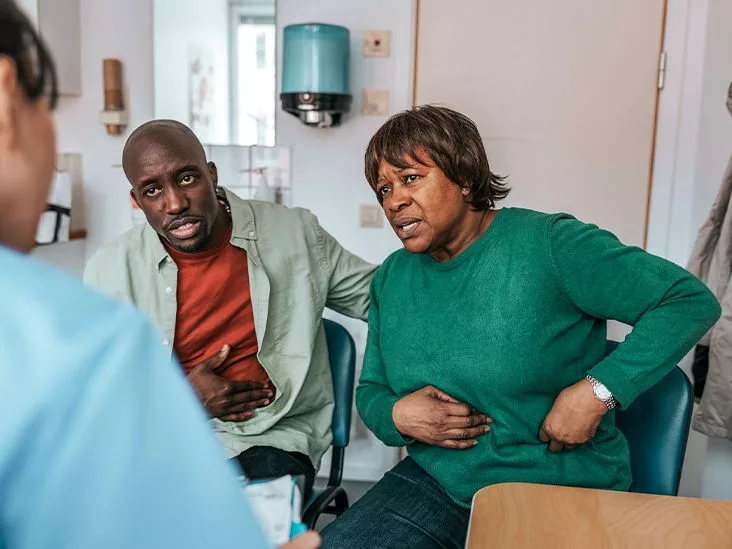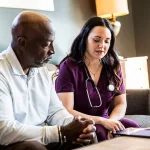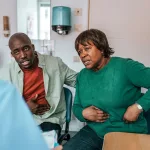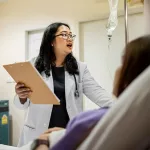Most people don’t realize that stage 2 colon cancer means the tumor has pushed through the wall of the colon but hasn’t yet reached the lymph nodes or distant organs. It can feel like a vague, unsettling whisper in the back of your mind—”What does this mean for me?” Below, I’m breaking it down in plain language, sharing the science, and sprinkling in a few real‑world stories so you feel less alone and more in control.
Quick Answer
In a nutshell, stage 2 colon cancer is a localized disease where the cancer has grown into the outer layers of the colon (T3‑T4) but remains node‑negative (N0) and shows no distant spread (M0). Many patients don’t notice any obvious colon cancer symptoms at this point, which is why regular screening is so important.
What Is Stage 2
Definition According to AJCC
The American Joint Committee on Cancer (AJCC) uses the TNM system to define stage 2. In simple terms:
- T3: Tumor extends through the muscular wall into the subserosa.
- T4a: Tumor perforates the visceral peritoneum (the thin outer lining).
- T4b: Tumor invades nearby organs or structures.
- N0: No cancer found in nearby lymph nodes.
- M0: No distant metastasis.
When you put those pieces together—T3/T4, N0, M0—you get stage 2 colon cancer. According to the AJCC staging manual, this classification helps doctors decide how aggressive the treatment should be.
Sub‑Stages Explained
| Sub‑stage | Pathology (T) | Typical Description |
|---|---|---|
| IIA | T3 | Tumor reaches the subserosa but does not perforate it; still N0, M0. |
| IIB | T4a | Tumor perforates the visceral peritoneum; still N0, M0. |
| IIC | T4b | Tumor invades nearby organs or structures; N0, M0. |
How It Differs From Other Stages
Think of colon cancer stages as a ladder. Stage 0 is a tiny, non‑invasive growth; stage 1 stays within the inner layers. Once you climb to stage 2, the cancer has breached the wall but hasn’t taken the elevator to the lymph nodes (stage 3) or distant sites (stage 4). This middle‑ground positioning is why the treatment conversation often feels “balanced”—the cancer is serious enough to act, but still potentially curable with surgery alone.
Symptoms You May Notice
Typical Signs (and Why They’re Missed)
According to MSKCC, common symptoms include:
- Changes in bowel habits (diarrhea or constipation)
- Blood or dark stools
- Abdominal cramping or pain
- Unexplained weight loss
- Fatigue or anemia
But here’s the kicker—up to 30 % of people with stage 2 colon cancer report no symptoms at all. The tumor can be deep enough that the colon still functions normally, making it easy to brush off that vague “stuffiness” you might feel.
Red‑Flag Signals Worth Calling Your Doctor About
Even if you feel fine, keep an eye out for these warning lights:
- Persistent blood in stool or on toilet paper
- Sudden, unexplained weight loss (more than 5 % of body weight)
- Ongoing fatigue despite rest
- Abdominal pain that doesn’t improve
When any of these show up, a quick chat with your primary care provider can set the stage for an early colonoscopy—often the difference between “caught early” and “caught later.”
How Doctors Diagnose
Colonoscopy: The Gold Standard
Screening colonoscopy remains the most reliable way to spot a tumor before it spreads. During the procedure, a tiny camera slides through the colon, and if a suspicious polyp appears, the doctor can remove it right then for pathology. The American Cancer Society recommends starting routine colonoscopies at age 45 for average‑risk adults.
Pathology & Molecular Testing
Once the tissue is in the lab, a pathologist confirms whether it’s cancer and assigns the T‑stage. Some labs also run molecular tests—like microsatellite instability (MSI) or the Oncotype DX colon cancer assay—to gauge how aggressive the tumor might be. These extra data points can tip the scales toward or away from chemotherapy.
Emerging Biomarkers: ctDNA
“Circulating tumor DNA” (ctDNA) is a hot topic. A tiny blood test looks for fragments of DNA shed by cancer cells, helping doctors detect microscopic disease that imaging might miss. Fight CRC mentions ongoing trials that use ctDNA to decide whether adjuvant chemo is truly needed after surgery.
Treatment Options
Surgery: The Cornerstone
If you’re reading this, you’ve probably heard that surgery is the first line for stage 2. A colorectal surgeon removes the portion of colon containing the tumor, along with a margin of healthy tissue and the regional blood vessels. Two main approaches exist:
- Open colectomy: a single, larger incision for a direct view.
- Laparoscopic colectomy: several tiny incisions, a camera, and specialized tools. Recovery is usually faster, and many patients report less postoperative pain.
Both techniques aim to achieve “negative margins” (no cancer cells at the cut edge) and harvest at least 12 lymph nodes for accurate staging.
Adjuvant Chemotherapy: When and Why?
Here’s where the conversation gets nuanced. For many stage 2 patients, surgery alone is enough—especially if the tumor is low‑risk. However, certain high‑risk features tip the balance toward adding chemo:
- Poor tumor differentiation (grade 3‑4)
- Lymphovascular invasion
- Fewer than 12 lymph nodes examined
- Obstruction or perforation at diagnosis
- Positive surgical margins
When one or more of these red flags appear, oncologists often recommend a regimen like FOLFOX (5‑FU, leucovorin, oxaliplatin) or CAPEOX (capecitabine + oxaliplatin). Studies cited by Cancer.org show a modest improvement in disease‑free survival for high‑risk stage 2 patients.
Radiation & Targeted Therapies
Radiation isn’t a routine part of colon cancer treatment—it’s more common for rectal tumors. Targeted agents (like bevacizumab) are usually reserved for metastatic disease, though clinical trials sometimes explore them in the adjuvant setting. If you’re curious about trial options, ask your oncologist about ongoing studies at major cancer centers.
Balancing Benefits and Risks
Chemo can bring side effects: nerve tingling, nausea, fatigue, and occasional hair loss. The key is a balanced discussion—your doctor weighs the potential reduction in recurrence against these impacts. Remember, many patients finish chemo feeling proud for having taken every possible step toward cure.
Prognosis and Outlook
Survival Statistics
According to the American Cancer Society, the 5‑year relative survival for stage 2 colon cancer sits around 80‑85 % for IIA/IIB and slightly lower for IIC. Those numbers reflect large populations; your personal prognosis depends on the specific risk factors we just discussed.
Factors Influencing Outlook
- Tumor grade: Well‑differentiated tumors behave better.
- Number of lymph nodes examined: More nodes give a clearer picture and often correlate with better outcomes.
- Microsatellite stability: MSI‑high tumors may respond differently to certain therapies.
- ctDNA status after surgery: Detectable ctDNA can flag a higher chance of recurrence.
Quality of Life After Treatment
Most people resume normal activities within weeks to months after a laparoscopic colectomy. Bowel habits can change—some experience looser stools or a “short‑bowel” sensation—but dietary adjustments (more fiber, adequate fluids) usually iron out the kinks. Physical therapy or gentle walking can also speed up recovery.
Living After Diagnosis
Follow‑Up Schedule
Standard surveillance includes:
- Colonoscopy at 1 year post‑surgery, then every 3‑5 years if clear.
- Blood tests for carcinoembryonic antigen (CEA) every 3‑6 months for the first 2 years.
- CT scans of the chest, abdomen, and pelvis only if symptoms or elevated CEA suggest recurrence.
Nutrition & Lifestyle
Adopting a colon‑friendly diet can lower the odds of a second cancer. Aim for:
- At least 25‑30 grams of fiber daily (whole grains, fruits, veg).
- Limited red and processed meats.
- Regular moderate exercise—30 minutes most days.
- Maintaining a healthy weight; obesity is a known risk factor.
Emotional Wellness
A cancer diagnosis can feel like an emotional roller coaster. It’s okay to feel scared, angry, or numb. Consider joining a support group (many hospitals host virtual meetings) or talking with a counselor who specializes in oncology patients. Sharing your story—just like you’re doing now—helps you process the experience and may help others feel less isolated.
When to Seek a Second Opinion
If you ever feel uncertain about the recommended plan, remember that a second opinion is not a sign of distrust; it’s a smart step toward empowerment. Choose a board‑certified colorectal surgeon or medical oncologist at a comprehensive cancer center. Bring your pathology report, imaging, and a list of questions—your future self will thank you.
Bottom Line
Stage 2 colon cancer sits at a pivotal point: the disease is still localized, giving you a strong chance of cure, yet it’s serious enough that careful treatment decisions matter. Early detection, a solid surgical job, and a personalized conversation about chemotherapy can tip the scales toward long‑term health. Keep up with follow‑up appointments, nourish your body, stay active, and lean on friends, family, or support groups when the emotional weight feels heavy.
If you have questions, don’t hesitate to reach out to your health‑care team. You deserve clear answers, compassionate care, and the confidence to move forward—one step at a time.

















Leave a Reply
You must be logged in to post a comment.